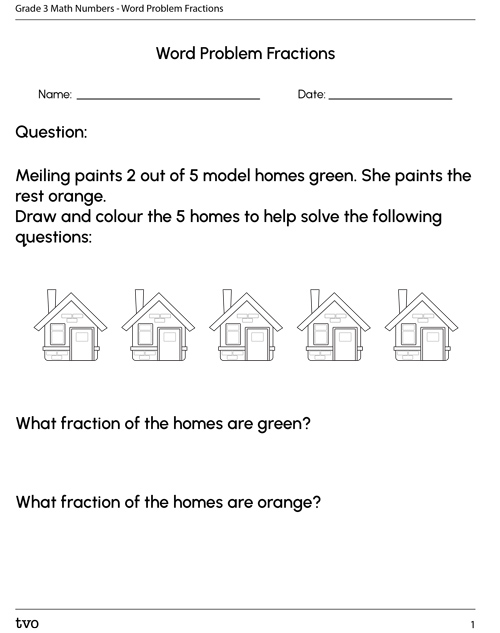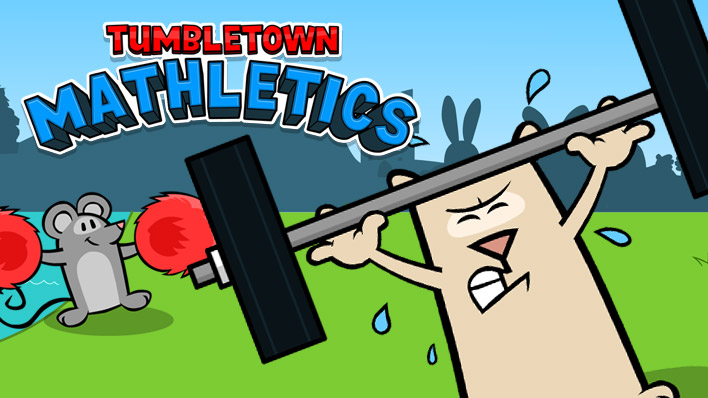Minds On
Fractions, fractions everywhere!
We experience fractions in many different ways. We use fractions in recipes, science experiments, when we share with friends and in music. Let's explore fractions in music with Eric.
Create your own musical composition that includes whole, half and quarter notes. You may use instruments found in the learning environment, body percussion including clapping or stomping or sounds and words.
Record your composition using symbols for whole notes, half notes and quarter notes.
Make an audio or video recording of your composition and share it with a friend or a family member.
In this learning activity, we will learn more about the relationship between the parts in a fraction.
Let's explore fractions with Teacher Troy.
Access the video “Understanding fractions” to learn more about fractions.
Action
What is a fraction?
It is a number that represents a quantity that is not a whole number. For example, a fraction represents a relationship between two quantities.
In other words we can say a fraction is a number that expresses equal parts of a whole object or set of objects. For example, Rahil shaded one quarter, ¼ th portion of the drawing of a ball.
Fraction = Part of a whole

A fraction is made up of 3 parts: the numerator, the denominator and the fraction bar.
Numerator
This is the number above the line in a fraction. It represents the number of equal parts being considered.
Denominator
This is the number below the line in the fraction. The number of equal parts into which a whole or set is divided.
Fraction bar
This is the bar or line that separates the numerator and the denominator in a fraction.
Key words:
Halves, thirds, fourths, fifths, sixths, sevenths, eights, etc
Different ways to represent a fraction
Fractions can be represented with the help of the following:
- Part of a group
- Number line
- Fraction bars
- Fraction circles
Part of a Group
We can represent fractions as a part of a group. The denominator is represented by the total number of objects in the group. The numerator is represented by the parts of the group that stand out.
In the following fraction the denominator is 6 because there are 6 parts in total that make up the whole.

What fraction represents the blue? There are 4 parts that are blue. We can represent the fraction as:
What fraction represents the white? There are 2 parts that are white. We can represent the fraction as:
Complete the following "Word Problem Fractions" activity. Use your notebook or the fillable organizer to show your work.
Number line
We can represent fractions on a number line. This helps us to understand how fractions represents parts of a whole. To represent a fraction on a number line, start by dividing the line segment into equal parts. The number of equal parts depends on the denominator in your fraction.
To represent a fraction on a number line, start by dividing the line segment into equal parts. The number of equal parts depends on the denominator in your fraction.
For example, if we want to represent the fraction on the number line, we need to divide the line between 0 and 1 into 3 equal parts. Then, the first point on the segment, as shown below, represents the fraction the second point represents and the third point represents 1 whole
 Description
Description
A number line split into equal thirds. It is marked with the numbers 0, 1/3, 2/3 and 1. There are two arrows on top of the number line. The first arrow starts at 0 and jumps to 1/3. The second arrow starts at 1/3 and jumps to 2/3.
Fraction Bar
Fractions can also be represented using a fraction bar model. To represent a fraction using a fraction bar:
Step 1: draw a rectangle
Step 2: divide the rectangle into equal parts that reflect the denominator
Step 3: shade in the number of parts equal to the numerator
As we shade in each part of the fraction bar, we are representing the repeated addition of a single unit of the fraction.
Repeated addition is the process of adding the same number two or more times.
Example:
In the following example, we are showing the repeated addition of to represent 5 parts of 6 or .
Fraction strips
We can use fraction strips to add unit fractions with the same denominator and compare fractions.

Practice
Solve the following question using fraction strips. Share your ideas in your notebook.
Question:
A kennel has 6 animals. 2 of the animals are cats. Use a fraction bar to model the animals at the kennel. What fraction of animals are cats? What fraction of animals are not cats? Use fraction strips to model fractions that are equal to the fraction of animals that are cats and the fraction of animals that are not cats. How many models can you create?

Fraction circles
Fraction circles are used to model fractions. The total parts of the circle represent the denominator and each section of the circle represent a unit of the fraction.
We can use fraction circles to represent and compare fractions.
 Description
Description
Nine equal circles. One is whole, one is split equally in half, one into equal thirds, one into equal fourths, one into equal fifths, one into equal sixths, one into equal sevenths, one into equal eighths, and one into equal ninths.
Practice
Solve the following question using fraction circles.
Would you rather have or of a pizza?
Justify your reasoning. Include a variety of representations in your response.
Share your ideas in your notebook.

Consolidation
Show what you know
Student Success
Think-Pair-Share
Investigate a Cookie Theft
Solve the following word problem in your notebook.
On Sunday morning, Khalid and their dad made some chocolate chip cookies. Their dad put the cookies on a plate in the kitchen. That evening, Khalid was surprised to see there was only 1 cookie left! They began to do some investigating. They found out that their sister and their friend had eaten half the cookies on the plate. Their dad had eaten one-quarter of the cookies. Their mom had not eaten any cookies, but their little brother had eaten 2. Khalid had only eaten 1 cookie.

How many cookies were there on the plate to begin with?
In your notebook, include math language to show Khalid's thinking as they solve the math problem. Include pictures and numbers in your thinking.
Share your ideas in an audio or video recording.
During the presentation:
- review the entire problem
- show how you solved the problem
- use think-aloud to show the "thinking" behind the solutions
- explain why the answer is correct
Note to teachers: See your teacher guide for collaboration tools, ideas and suggestions.
Reflection
How do you feel about what you have learned in this activity? Which of the next four sentences best matches how you are feeling about your learning? Press the button that is beside this sentence.
I feel…
Now, record your ideas about your feelings using a voice recorder, speech-to-text, or writing tool.
Press ‘Discover More’ to extend your skills.
Discover MoreIt’s time to play a game! You will now access Tumbletown Mathletics.

